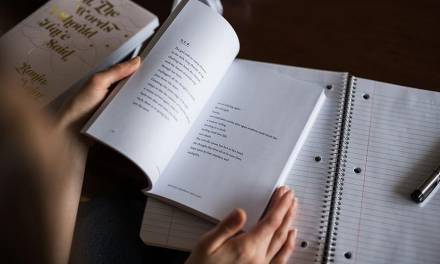Exam times are a very stressful period for students, and while a small amount of stress can be motivational, too much is the opposite and means that students won’t be able to perform at their best.
But what can be done to alleviate stress during this very important time?
Mindfulness is a bit of a buzzword at the moment and it’s easy to dismiss it as the latest fad. However, it’s been used to great effect by therapists to treat anxiety, depression and stress, especially in the US, for at least 45 years.
Its newness seems to derive from only having recently crossed over from the therapy room to the mainstream.
Fight or flight
Stressful situations trigger our flight or fight response. This is an evolutionarily useful reaction to dangerous situations, like coming face to face with a lion.
Neurotransmitters adrenaline and cortisol flood the body and sugar and fat are released into the bloodstream, making us faster and stronger and giving us more endurance over a short time period. So we can run away from the lion.
Once we’ve run away, though, the stressful situation disappears and adrenaline, cortisol, sugar and fat levels all return to normal.
It is, of course, highly unlikely that your students will encounter a lion in the school corridors, but exam times can trigger the same fight or flight response. The problem is that there is no actual threat and those neurotransmitters, fats and sugars won’t return to normal, potentially leading to health problems.
This is where mindfulness comes in. Your students can’t fully concentrate on revising for an exam if they’re already worrying about the outcome.
Use mindfulness to focus on the present
Mindfulness means being present, paying attention to the task at hand rather than worrying about something that hasn’t happened yet. By focusing on the here and now, students are less likely to get caught up in fretting about the future or the past.
A study in the British Medical Journal showed that even limited use of mindfulness can significantly reduce perceived levels of stress, with participants reporting up to 40% fall in stress levels.
But how can you get your students to be more mindful? Try using the meditation at the end of this article in class – simply hit playback and ask your students to sit quietly and listen.
Practice doesn’t have to be formal, though. Students can practice mindfulness on their own during revision sessions just by pausing for a moment to concentrate on their breathing.
Just three minutes spent attending to the breath, allowing thoughts to come and go rather than holding onto them, can stop stress in its tracks, as well as improve the ability to focus. Better focus and less stress mean more effective working, which can lead to better exam results.
Recommended Apps
There are lots of apps for mindfulness. Here are three of the best:
7-Minute Mindfulness Practice for Responding to Stress
Rebecca has been a writer and editor for almost 20 years. She writes on a huge range of subjects, concentrating on sport, nature, mental health, and crafts.









